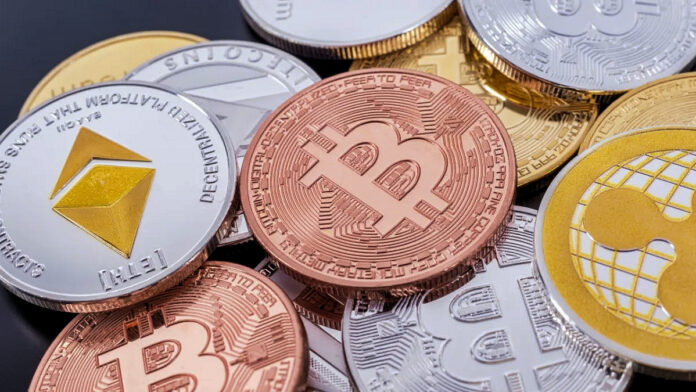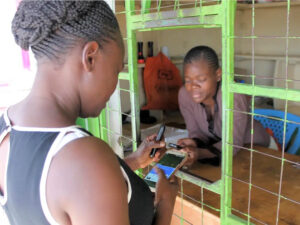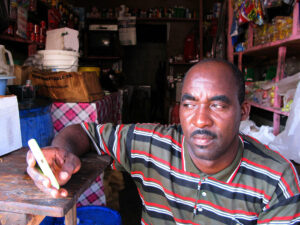
As cryptocurrency makes the rounds across the globe, its buzz has reached Haiti in the form of donations and nascent projects. In this series, The Haitian Times takes a look at a few players and the pros and cons if digital currencies were to take root in Haiti. For definitions of certain terms used, view this glossary.
Proponents of cryptocurrency want to increase crypto’s presence in Haiti with hopes that it will meet the needs of people without financial services, referred to as “the unbanked.” Numerous projects, webinars, and summits float ideas of how that can happen, including making cryptocurrency Haiti’s legal tender — its national money.
Not everyone agrees.
“Overall, volatile cryptocurrency can never and will never work for payments, and anyone who says so is effectively lying,” said Nicolas Weaver, a senior researcher who writes and lectures extensively on cryptocurrency at U.C. Berkeley’s International Computer Science Institute.
Weaver, who studies computer network security and internet-scale attacks, made these comments in an email to The Haitian Times. He was responding to the concept of the yam vendors in Haiti, described in The Haitian Times’ first article in the crypto series.
Cryptocurrency isn’t stable enough to guarantee buyers can receive their money back if they wish to return a product or service, according to Weaver.
“As an example of just how bad it is, if someone sold their yams a year ago, what they have now is only worth 25% of what it was,” Weaver said, a week after the international crypto market plummeted. [This] is clearly a ridiculous risk and even more risk than the local economic uncertainty.”
Cryptocurrency is an asset, not currency
Economists define the functions that money plays as a resource that circulates and facilitates purchases, and is a measure of wealth. Crypto works not as money, like dollar bills, but as an asset, like stock in a company.
People who own Bitcoin are more concerned about the value of Bitcoin in the market than spending it as money, said Raul Zambrano, an international development expert who researches innovation and technologies.

“If I can see that it’s going to go up 50%, I will not spend my Bitcoins,” Zambrano said.
Yet hoarding a currency runs counter to the purpose of currency to facilitate transactions.
In recent years, more and more institutional investors and traditional finance institutions have been exploring opportunities in cryptocurrency for their account holders, said Iwa Salami, co-director of the Centre of FinTech at the University of East London. She suggested that with regulation, investing firms might expand cryptocurrency investment offerings to bigger markets.
Regulation could help guard against financial crime or against defrauding investors, among other benefits.
A cautionary crypto tale
In Haiti, proponents advocate adopting crypto as the national currency since the Haitian gourde has been losing value. However, Weaver points to what happened in El Salvador last September, when the country adopted cryptocurrency as its legal tender.
El Salvador had used the U.S. dollar as its currency since 2001 and added Bitcoin in September, 2021. Six out of 10 Salvadorans quit using Bitcoin after spending the incentive offered — $30 USD — reported Coinbase, an online platform for cryptocurrency.
When given a choice between the two currencies — Salvadorans preferred to use cash. That reason, according to a face-to-face survey taken by 1800 households, was followed by trust issues — of the system or Bitcoin itself.
“Their Bitcoin ’experiment’ has clearly failed,” Weaver said.
A financial inclusion model to consider
To help the unbanked, “Haiti should look at M-Pesa in Kenya and to use physical dollars or Euros if the local currency is too unstable,” said Weaver.
M-Pesa is known as “mobile money” — a mobile phone-based service started in Kenya for money transfers, payments, and micro-financing activities. Launched by Vodafone and Safaricom in 2007, it’s now the largest fintech platform in Africa. It serves 50 million customers in seven countries with over 400,000 agents, with cash and cellphones, acting as ATMs.
M-Pesa also allows for cashless transactions, including buying groceries or paying for services.
Its mobile money accounts work like Venmo, but no bank account is required. Money can be added to an e-wallet by a deposit of cash through a vendor or by remittance.

Key differences between mobile money and cryptocurrency: Mobile money exists within the legal currency of a country, whereas cryptocurrencies don’t. Many cryptocurrencies facilitate anonymous transactions. Mobile money transactions, in contrast, are subject to customer identification per government regulations.
Economists wrote in a 2016 paper that M-Pesa lifted close to 200,000 households above the extreme poverty line. Users better withstood life events that impacted their finances, and they showed more occupational mobility — especially women — moving from agriculture to business.
Mobile money in Haiti and financial literacy
In 2010, in response to the success of the M-Pesa, the Bill & Melinda Gates Foundation launched the Haiti Mobile Money Initiative (HMMI) with $10 million after the earthquake. They implemented an operation initially with mobile phone networks Digicel and Voila, later acquired by Digicel.
The program incentivized creating and scaling mobile money services, grants to improve access to financial services through mobile money, and regulatory code from the Central Bank of Haiti, or BRH.
Initial results showed more than 800,000 mobile money users registered during the first two years. NGOs were among the first adopters of this new technology to disburse post-disaster cash payments. However, registered customers did not stay as active ones, leaving mobile money services underutilized.
Users didn’t fully understand mobile money and how it worked. They were price sensitive. Though they were curious, they didn’t trust the system.
In 2015, a follow-up study for HMMI found that more than 77% of the formal and informal merchants surveyed believed that viewing financial activities on their phone would help them run their business more effectively.
Final project reports showed that better education on the value of mobile money and its accessibility would have benefitted both users and merchants.
Mobile money continues to be used in Haiti via bank apps, cash remittances, and when NGOs want to disburse cash — but not with the enthusiasm envisioned by HMMI.
An earlier version of this article was published in the Haitian Times.









